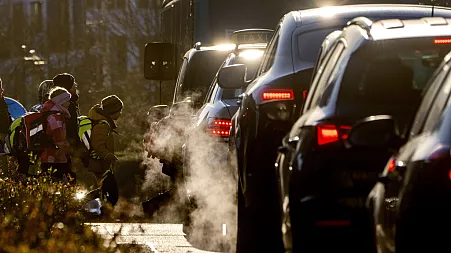Giant flywheels are to be installed around the UK to minimise the risk of blackouts as the power system goes carbon-free.
Flywheels are energy storage systems that use surplus electricity to accelerate a massive metal “wheel”, thereby turning it into mechanical energy. To avoid energy losses, the wheels are kept in a frictionless vacuum.
If the grid needs a boost of electrical energy, the spinning disk can be used to generate power via magnetic induction – just as happens in the steam turbines of a traditional power station.
The flywheels, some weighing hundreds of tonnes and spinning up to thousands of revolutions per minute, will store energy that can then be converted back into electricity within fractions of a second. This is designed to help the grid counter the fluctuations caused by renewables.
They will be installed at key points around the electricity grid to stabilise the net zero electricity transmission systems and minimise the risk of blackouts.
The plans drawn up by Ed Miliband’s new National Electricity System Operator (NESO) will help to minimise the risk of disruption as the UK increases its reliance on wind and solar farms, the output of which can fluctuate from minute to minute with the weather.
It follows warnings that the removal of coal, gas and nuclear power stations from the system will leave the grid without the secure steady baseload needed to maintain stability.
Grid instability is a known cause of blackouts: more than 1m people across the UK were plunged into darkness in August 2019 during one of the worst power blackouts in more than a decade. The cause was a small change in grid frequency, caused by lightning hitting cables.
Studies show the risk of a repeat will grow with the amount of renewables.
NESO, which was officially launched on Tuesday, said the plan followed 57 “pathfinder” projects around the country to see if flywheel and other technologies could work.
A spokesman said: “The trial projects have proven successful and now we want to establish a network of flywheels and similar grid-stabilising technologies around the country. This will be put out to tender.
“Spinning flywheels are one of a number of technologies needed to deliver inertia [stability], control current frequency and other services to manage the physics of the network.”
One of the trial projects has been under way in Liverpool, run by Statkraft, a Norwegian company. It is adjacent to the site of the former coal-fired power station that once supplied much of Merseyside’s electricity.
Statkraft is also behind a similar £20m trial project at Keith, in Moray, Scotland, which also uses flywheels to store energy and stabilise the grid.
Such systems work by replicating the spinning turbines of a traditional power station but without the reliance on fossil fuels or the emissions associated with them.
The UK’s transmission networks were designed around a network of power stations fuelled originally by coal and later by gas and nuclear energy. These all work by generating heat to make steam that is then used to spin turbines.
The last coal-fired power station at Ratcliffe-on-Soar, Nottinghamshire, closed this week and eight of the nation’s nine remaining nuclear reactors will close by 2028, with gas also falling out of favour owing to its CO2 emissions.
The loss of such generators poses risks to the system because the power they produced was constant and therefore helped maintain the steady frequency needed to prevent outages.
An NESO spokesman said: “If there’s a sudden change in system frequency, the weight and inertia of generators means they carry on spinning – even if they have lost power. This avoids a sudden change of frequency, giving time for our control room to restore balance.”
The scale of the problem is shown by the number of contracts awarded for so-called “stability services” – expected to total more than 100 by the time all are operational, probably in 2026. NESO is now planning to open an entire new stability services market to encourage the construction of more flywheels or other services that back up the grid.
NESO said the schemes would save consumers money by cutting the need for maintaining backup power stations and importing power from overseas via interconnectors.
A spokesman said: “The pathfinders alone are expected to provide consumers with savings of £14.9bn between 2025 and 2035.”
Disclaimer: The copyright of this article belongs to the original author. Reposting this article is solely for the purpose of information dissemination and does not constitute any investment advice. If there is any infringement, please contact us immediately. We will make corrections or deletions as necessary. Thank you.



